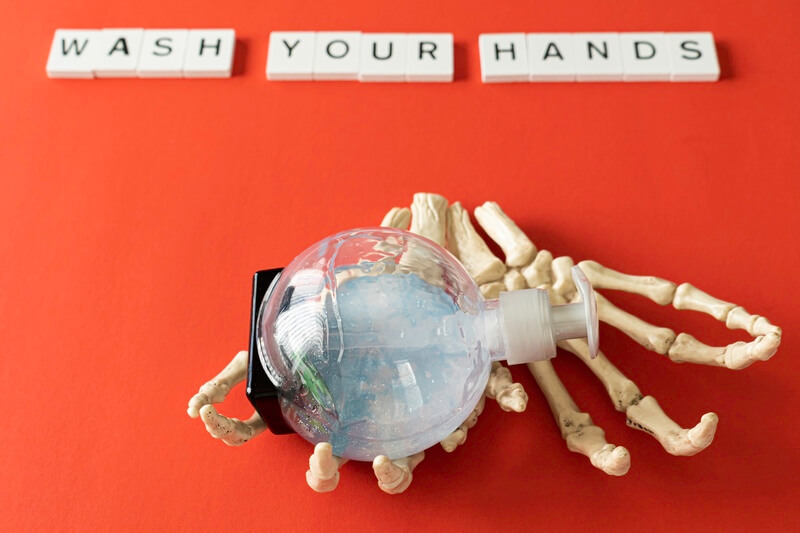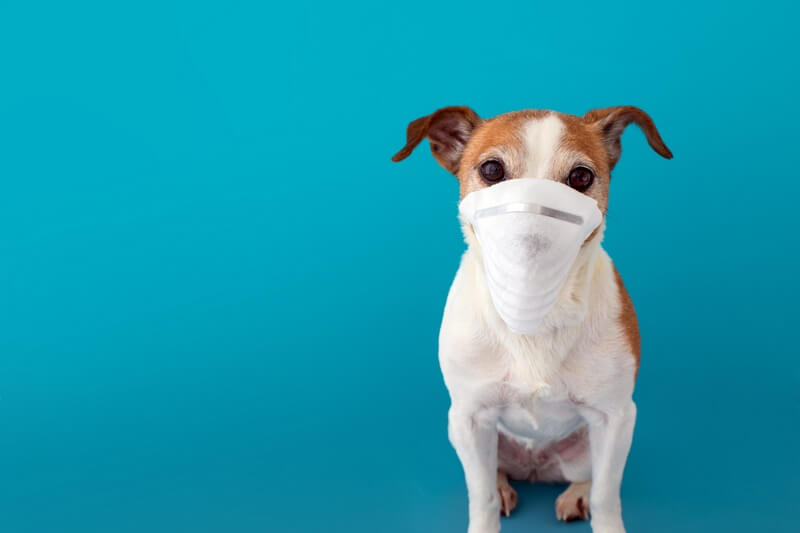
Guidance for businesses
COVID-19 pandemic planning for businesses is hard when you are in the middle of a crisis emergency. Pandemics are caused by new viruses so existing business continuity plans often fall short. Most plans are built for a more routine disaster like a building fire or hurricanes.
A friend called me last week saying she wished she had taken me up on previous offers to help with continuity planning. As a busy small business owner, she did not prioritize it. However, with the pandemic, she is regretting not having a crisis plan in place.
Her company is an essential business, so she wants to keep operations running. At my request, she sent her company’s action plan and I analyzed what she implemented to-date from a health security and continuity perspective. In this blog, I will share additional actions that can be taken to safeguard a business from the impacts of the coronavirus.

If you don't have a BCP, it's too late
Many people create a business continuity plan from a template. FEMA’s BCP template is very basic but it is an okay place to start. However, if you do not have a plan in place today, this is not the time to develop one. Because we are in the midst of a crisis emergency it is too late to plan or test it.
Instead, I recommend creating a pandemic plan that you can use right now. it can be helpful to have a core group of staff to develop it. I developed the guidelines in the remainder of this blog to help you create the plan.

Health security for employees & customers
To safeguard your business from the coronavirus, your business can implement health security protocols for customers and employees.
The protocols I recommend implementing are below.
- Establish social distancing of 6 feet in-between staff (at desks/cubes, registers, etc.). If you have a register area, you will want to do this for customer checkout lines. You can put tape on the floor outlining where you want customers to stand.
- Offer hand sanitizer wipes to people as they enter the store (similar to the grocery stores). To increase customer confidence, have employees actively wipe down and disinfect shelves during business hours. This lets customers see this is being done and increases their confidence.
- I recommend bleaching/sanitizing floors, shelves, and countertops twice a day at a minimum.
- Discontinue any ability for customers to sample goods unless you commit to continual cleaning. If it is a requirement, make sure you teach customers how to safely pick up disposable cups or similar items. Offer sanitizing wipes for cleaning.
- Customer and employee bathrooms: Make sure you are cleaning and enforcing proper handwashing techniques. Hang signage that encourages people to perform handwashing correctly.
- COVID-19 can be aerosolized from coughing or sneezing for some time (fog is an aerosol; water droplets are suspended in air) so there is no such thing as too much cleaning or use of PPE (Personal Protective Equipment).
- Using masks is recommended if you are a customer-facing business. Surgical or cloth masks are ineffective except to keep people who are already sick from spreading more germ. At best, they provide psychological comfort. The N95 masks are the best available commercially but are in short supply.
- Train employees on proper social distancing and protective measures. A friend sent me a picture of the maintenance men at the building she lives in. The men were standing too close together, had their N95 masks on their heads to talk and sported facial hair. None of these behaviors will keep them safe. The WHO and CDC have good information on food protective measures.
- Conduct a daily or shift briefings with employees to provide updates and address problems.
- Adopt the technique of coughing into your elbow, which was introduced during the H1N1 outbreak.
- Implement non-handshaking policies, such as elbow bumps. It looks strange at first but if you try making a joke out of it (it does look funny), it will catch on!
Both employees and customers will appreciate actions you implement to maintain their safety and support their wellbeing.

Creating a basic pandemic plan
The sections for a simple pandemic plan are outlined below.
Pandemic Plan Sections.
- Risk/Threat monitoring: Determine who will be responsible for the threat and risk monitoring on an on-going basis. Plug into local, state and regional sources. Choose legitimate outlets you trust like government websites and always double-check media sources. Here is a link to the legitimate Johns Hopkins Coronavirus map if you do not have it already.
- Alert sources: I find NECN‘s app is a good first alert source for the New England region. You can sign up to get your local or state health authorities’ sites to get their alerts. The WHO launched an alert feature in WhatsApp. Billions around the world rely on WhatsApp to communicate and get emergency alerts, so this was an excellent move.
- Phase response development: I suggest using the CDC’s Pandemic Intervals Framework (PIF). Or, you could align your response phases to the WHO’s guidelines. We are in Phase 5 of a pandemic now and regardless of which you choose, clearly outline your company’s actions to each event phase.
- Communication Plan: Document a communication plan for customers and employees (external/internal). Leverage media relations contacts or marketing ads to share good press about what you are doing so your customers and community are aware of it.
- Travel restrictions: Ask your employees if they traveled to high-risk areas in the last few weeks. You want to know this as it raises your business’ exposure and you will need to direct them to self-isolate for fourteen days to see if they develop symptoms.
- Human Resource Considerations: Make sure you have an emergency tree developed to communicate with staff. I suggest using a group chat app like WhatsApp to reach everyone at once. It is a best practice to create an employee and a separate management group. You will also want to have a separate management group for confidential discussions.
- Time-off / sick-leave: Document any pay, personnel, or sick time changes.
Once you have drafted the plan, share it with your employees so that they are aware of the documented procedures and policy updates. In the next section, I cover scenario planning designed to help you prepare for the impacts of this pandemic.

COVID-19 planning scenarios
The following procedures should be included in your pandemic plan if employees or customers report virus impacts. Outline your action and communication steps for each scenario.
- Secondary potential exposure (twice removed to a confirmed case) with no symptoms.
- Secondary potential exposure (twice removed to a confirmed case) with symptoms.
- Direct exposure to a confirmed case and the person is asymptomatic: quarantine and monitoring for development of symptoms (if they will share). Direct the individual to their health professional if they develop symptoms.
- Direct exposure to a confirmed case and the person is symptomatic.
- Employees needing to take time off to care for loved ones.
- Confirmed case of an employee.
- Confirmed case of a customer.
As part of your plan, determine if can you work-shift and who is cross-trained. Any gaps should be identified, including cross-training needs. Document what is critical work and what can be delayed or paused until conditions improve. Add succession planning that documents who will step in for key decision-makers like the owner or managers. Consider how each scenario will impact your operations and what workaround strategies you would need to implement.

Final thoughts and additional tips
To increase the effectiveness of your plan, add the additional scenario and protocol planning measures:
- Determine the bare minimum of staff needed to operate all of your existing processes.
- Plan for a range of 19-38% reductions in the workforce.
- Considered waiving online delivery fees to attract or keep customers, along with deferring a minimum order requirement. During this time, some sales are better than none. If you do deliveries or shipping, decide if you could continue to operate with just an online delivery. Part of your financial analysis should include how the pandemic could impact goals and operating costs.
- If you are a retail establishment, you should consider offering in-store pick up so that you can limit the time customers in the store at once. You can also offer curbside pick-up or limiting the number of people who are in the store at a time. I typically see a limit of 5 – 25 people at a time depending on the size of the business.
- Plan for what will happen in a worst-case the worst scenario where you have to close your business. In the US, there is not an appetite for full lockdown like we have seen in other countries. But, states and local governments are establishing their public health orders.
- Decide when you will layoff personnel (so they can get unemployment, etc.). Weigh the pros and cons of this, as it could mean a loss of personnel when you can reopen. This is a potential risk to this scenario.
- Capital/cash flow concerns: Take a hard look at how long can your business can continue if you have to close down for a while.
Last, communication is key during events. The more often you keep your employees and customers informed, the better. If you do not share, they will never know what you are doing and assume you are doing nothing. To develop an effective communication process, include your employees in developing it. Employees often come up with innovative ideas and may step up more than you realize during this difficult time.
For more on the coronavirus, I recommend you read my recent blog posts, The Best Defense Is A Good Offense For COVID-19 and Coronavirus-Social Isolation Tips.
